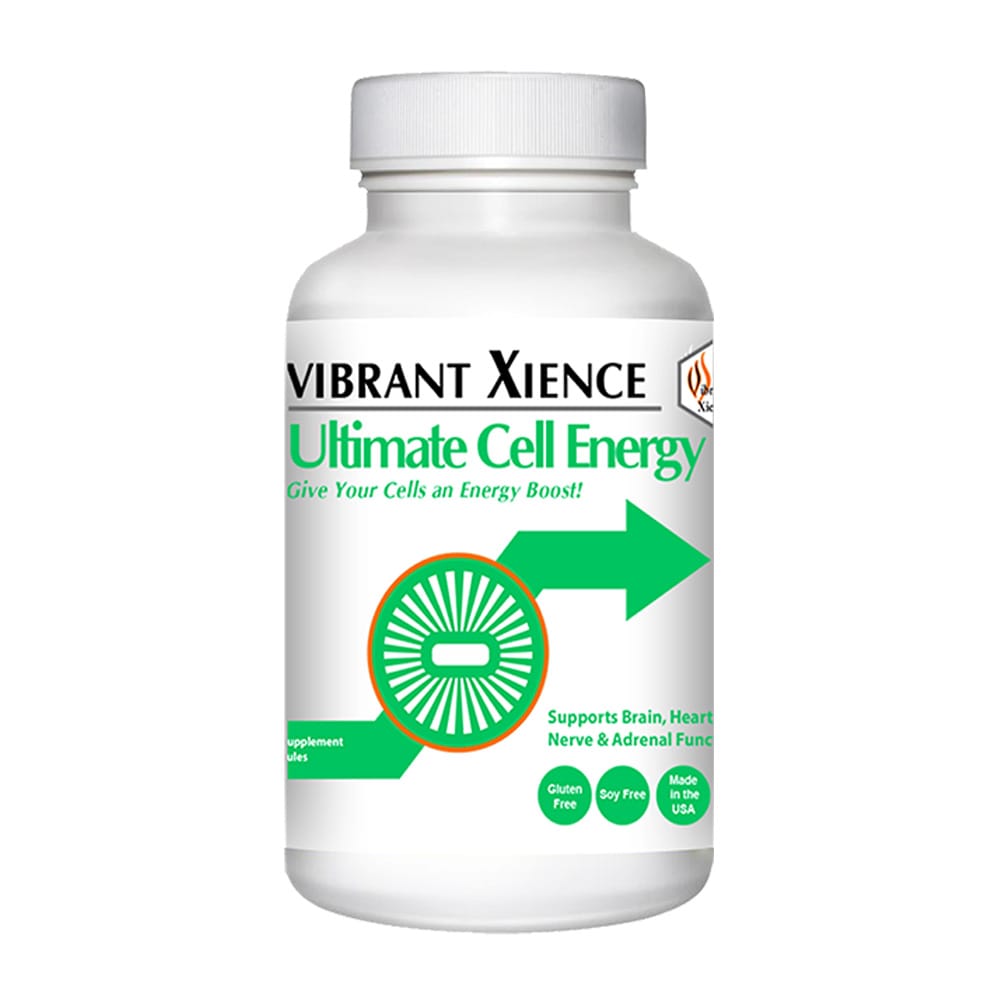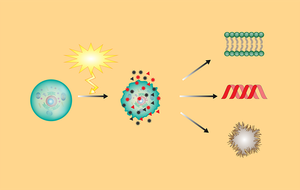Perhaps you’ve heard of “free radicals,” know they’re bad, but have no idea what they really are. If that’s the case, read on! Another thing called “oxidative stress,” a by-product of an overload of free radicals (which speeds up the aging process), is something you need to understand as well in order to make sense of it all.
What’s a Free Radical?
To put it simply: “Free Radicals are harmful molecules [tiny particles] that damage the body.”1 These molecules are made by the body when the body encounters various toxins. Free radicals are associated with speeding up the aging process, and degenerative diseases.2
To put it in a more scientific manner: “Free Radicals are chemical species that contain a single unpaired electron in an outer orbit. They are unstable and highly reactive.”3
An analogy of a single unpaired electron: a boy who goes stag to the prom and keeps bumping into girls trying to find a date!
Too many free radicals can cause propagation of cell injury (autocatalytic reaction).4 An autocatalytic reaction is a kind of a chain reaction; and in this case, we’re talking about a chain reaction of cellular damage in the body. The most common type of free radicals are Reactive Oxygen Species (ROS), and the other kind are Reactive Nitrogen Species. Sometimes they’re referred to collectively as “RONS” (reactive oxygen and nitrogen species).5 It has been estimated that each cell in the body is bombarded 10,000 times by free radicals each day.6
What Causes the Body to Produce Free Radicals?
The body generates free radicals when exposed to toxins such as: cigarette smoke,7 industrial air pollution, man-made toxicants, pesticides, food additives, preservatives, automobile-based-petroleum-driven pollution,8,9,10 alcohol consumption,11and fried foods. “Frying foods in any kind of fat or oil [and especially deep-frying] promotes free radicals.”12 Strenuous, endurance exercise also causes the body to generate free radicals.13,14
What is Oxidative Stress?
Oxidative Stress is a condition that occurs when the body can no longer counteract the large amount of free radicals with which it is being bombarded.15 It is an imbalance between free radicals and the body’s ability to fight them off with its built-in antioxidant defense mechanism.16 Oxygen is necessary for life and is a wonderful thing – in the right places. However, we’ve all experienced things rusting and getting “oxidized” when left outside. Occasionally, we hear of some kind of ancient treasure being brought up from the bottom of the sea in an amazingly preserved state and scientists immediately beginning to worry about the oxidation process. Yes, oxygen is highly necessary, but aspects of aerobic life (oxygen life) are also part of the oxidation process in the body which can become hazardous to your health; thus the term: “oxidative stress.”17
What Does Oxidative Stress Cause?
Have you ever met someone who really wasn’t up in years at all, but looked a LOT older (wrinkles, teeth falling out, etc.) than they really were? Oxidative stress can cause an acceleration of the aging process,18 and therefore all diseases considered to be age-related.
Oxidative stress caused from free radical damage is linked to nearly all non-germ degenerative diseases: blood cell disorders, dementia, Parkinson’s disease, Alzheimer’s disease, and other neurological diseases, neurotoxicity,19 Multiple Sclerosis,20 stroke, gum diseases (including periodontitis), cataracts, macular degneration, degenerative retinal damage, diabetes, diabetic retinopathy, gastrointestinal tract disorders, liver disorders, heart, and cardiovascular disease, arthritis, rheumatoid arthritis, lung disease, skin disorders, cancer, inflammatory-immune injury, reproductive disorders, and premature aging.19
Mitochondrial DNA Damage from Oxidative Stress
The mitochondrion is somewhat like the cell’s furnace. It is an internal part of the cell that acts as a sort of generator that produces the energy to power the cell. The mitochondria turn the energy from food into a substance that cells can utilize.21 Mitochondria, the energy-producing packets in the cell, can also undergo their own free radical damage and oxidative stress – more so than other organs actually because they’re burning energy, and require their own special type of antioxidants. Too many free radicals, and thus, oxidative stress, can wreak havoc with the brain’s mitochondria and make it difficult to concentrate and cause you to fatigue easily. Damage to the mitochondria in the brain can cause everything from brain fog and mild forgetfulness, to the debilitating degenerative disease of Alzheimer’s.22
The Body’s Natural ANTI-oxidant: Glutathione
When you have too much oxidation (oxidative stress), you need an ANTI-oxidant to repair it. The good news is that the cells in our bodies actually make a natural antioxidant – a substance called, glutathione. Glutathoine is comprised of three amino acids called glycine, cystine, and glutamine.
Things that Deplete Glutathione
It’s great to know that our bodies make this natural antioxidant (glutathione). However, a lot of daily things in which we partake can cause glutathione depletion; some of those things are:
- use of acetaminophen
- nitrites and other preservatives in foods
- household chemicals
- ultraviolet radiation
- artificial sweeteners
- cigarette smoke
- alcohol
People at Risk for Low Glutathione
Individuals who are on the autism spectrum, as well as individuals who have ADHD have been shown to have low red blood cell glutathione. There are studies that suggest their bodies do not regenerate glutathione in a normal way, causing a cellular shortage of glutathione and therefore more likelihood of damage from toxins to which they may be exposed.23,24,25
The MTHFR Gene Mutation and How it Affects the Body’s Natural Defense System, Glutathione
The MTHFR gene provides instructions to make an enzyme (methylenetetrahydrofolate reductase) important in the body’s ability to properly utilize folic acid (vitamin B9) and vitamin B12.
There are mutations in the MTHFR gene that code for this enzyme (DNA, the cell’s blueprint, holds the code that is used by the cell to produce enzymes) that cause the enzyme to not be as effective as the enzyme most people have. People who have this enzyme mutation cannot process B vitamins (B12 and folic acid) normally, which can affect many jobs the cell has to do. One of these jobs is to regenerate glutathoine. The MTHFR gene mutation affects the cell’s ability to make glutathione because it greatly reduces the cell’s ability to produce one of its components. Glutathoine is made of three amino acids: cystine, glycine, and glutamine. In order to regenerate gluathione, a cell must be able to automatically generate these amino acids. When a mutation of the MTHFR gene is present, the cell cannot change homocysteine into cystathionene which is then used to regenerate glutathione.
There is research that shows this gene mutation to be somewhat common in people who are on the autisum spectrum26,27 and in people who have heart disease and stroke.28 The MTHFR gene causes the body to be unable to methylate (process and utilize) B vitamins, which in turn makes it impossible to make glutathione. Oxidative stress affects the methylation cycle; but more so in people with MTHFR gene mutations. Therefore, taking a methylated B vitamin is important for anyone who has variations of this gene mutation. However, unless tested for the mutation, it is impossible to know if one has it. It is estimated that as many as 25% of people have variations of this gene mutation; although some variants cause more serious health issues than others.29
Ways You Can Help Your Body Reduce Free-Radical/Oxidative Stress Damage, and Help Your Glutathione Production
Lifestyle Modifications
Reality is that damage from free radicals is part of life. It is impossible to entirely eliminate free radical damage, and thus, oxidative stress. However, why create MORE damage by putting you and your loved ones at risk with things that are actually within your control?
Begin removing the toxins from you/your family’s life by taking control of the things you can actually manage and change:
- cigarette smoking (work on quitting or at least cut down)
- alcohol intake (reduce your intake or refrain altogether)
- diet (refrain from eating junk food)
- choosing/preparing non-fried foods more often (baking, broiling, boiling, steaming or braising is best)
- deep-fried foods (avoid altogether)
- use of harmful pesticides (there are safe alternatives to pesticides)
- use of household chemicals (white vinegar and baking soda are superb alternatives to household chemicals)
Dietary Supplementation
Ultimate Cell Energy contains a powerful blend of nutrients and antioxidants to support your brain's energy production and protect against harmful free radicals. With just two to four capsules a day, you can fuel your brain for optimal function and memory support.

Vibrant Xience
Exclusive supplements designed by Doctor Emi, and much more!
Please check with your health care professional before taking any type of dietary supplement.
The Doctor Emi Team

